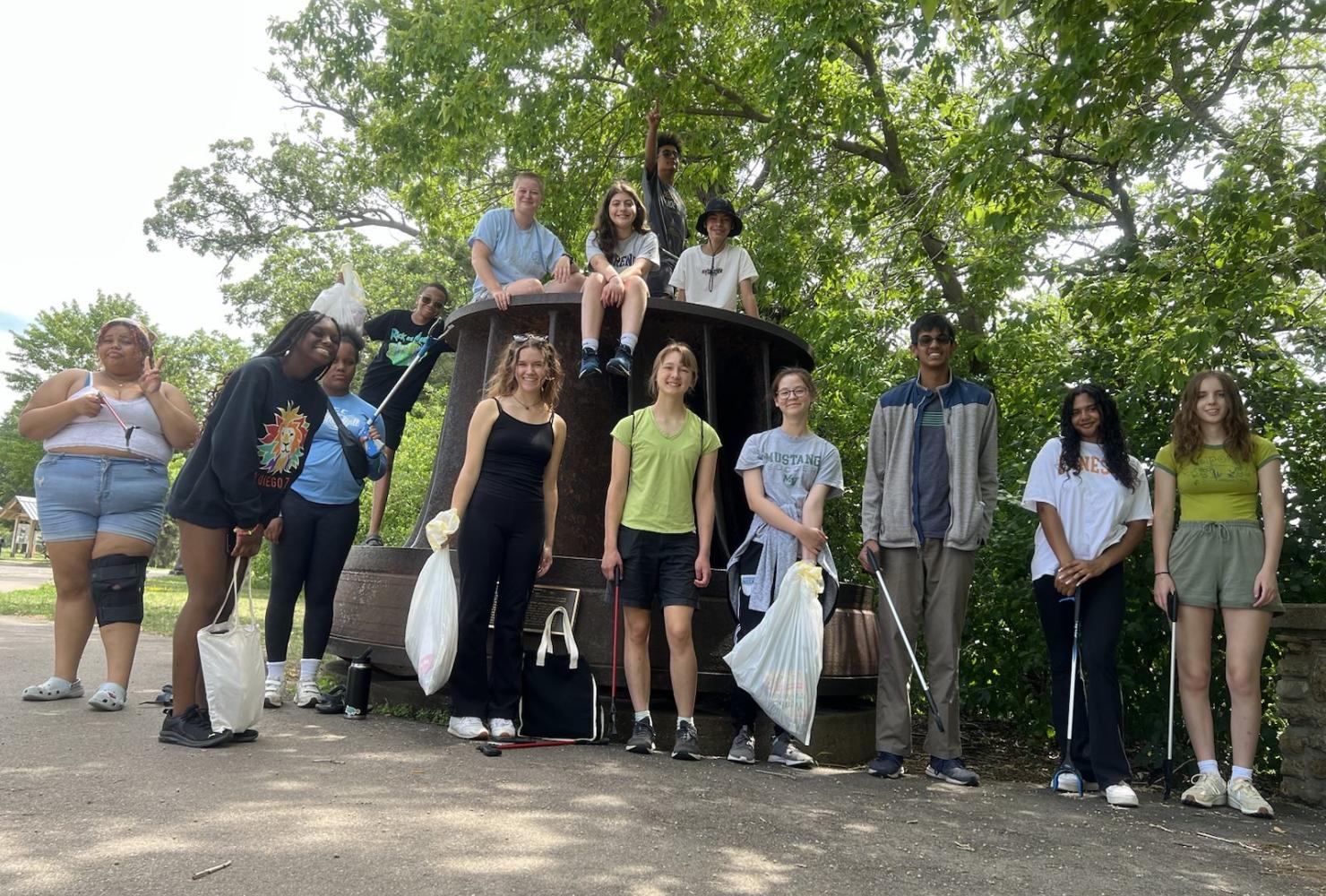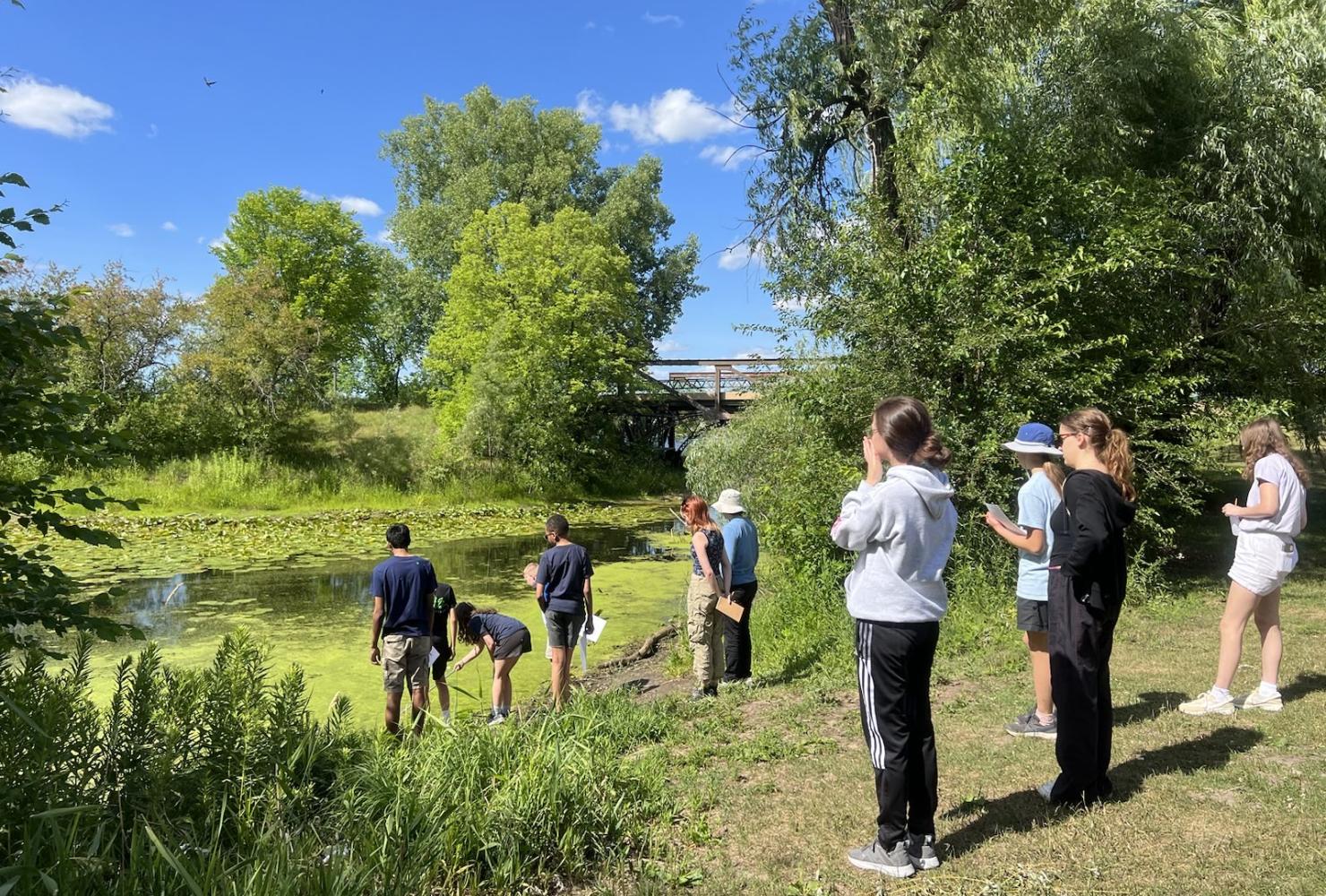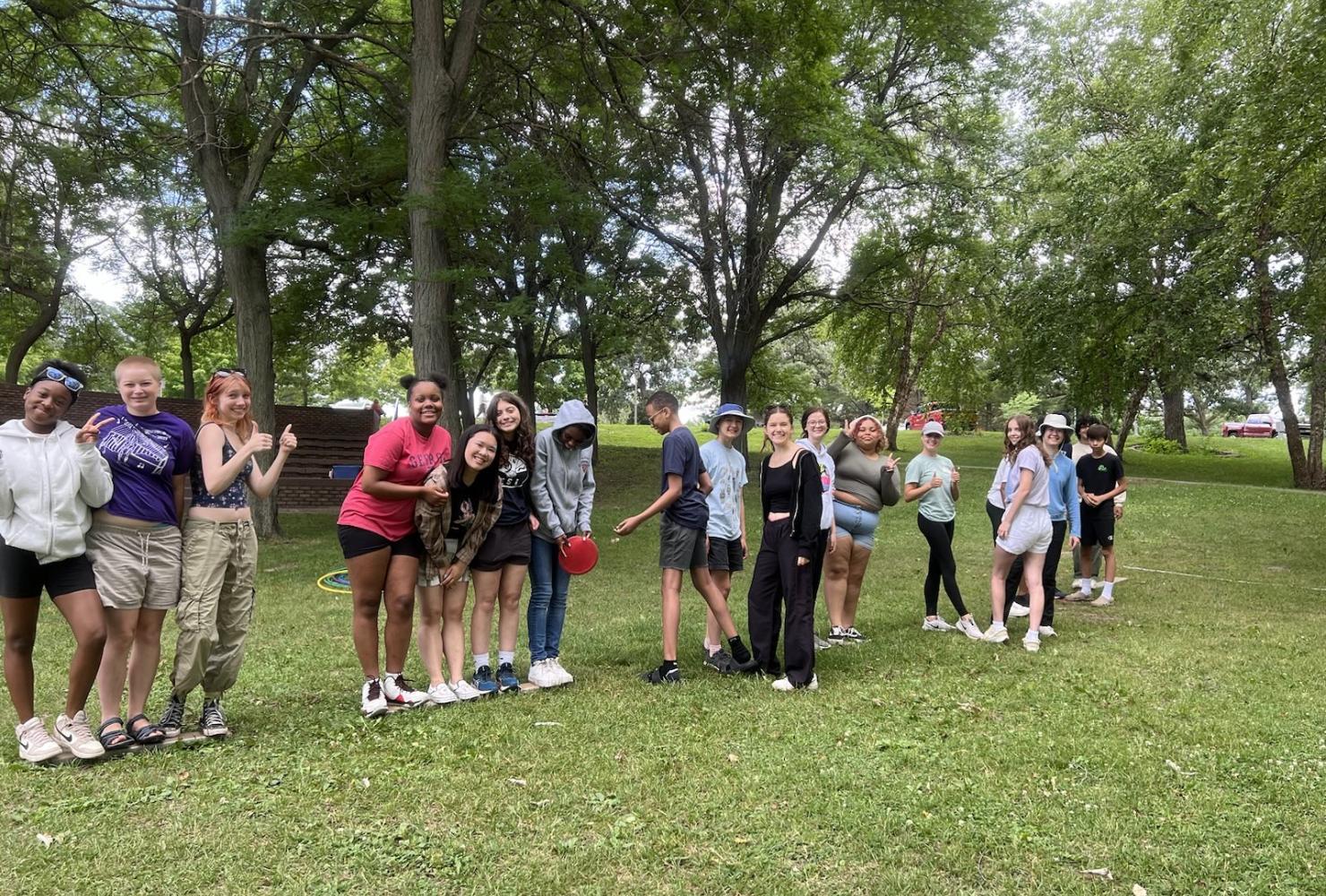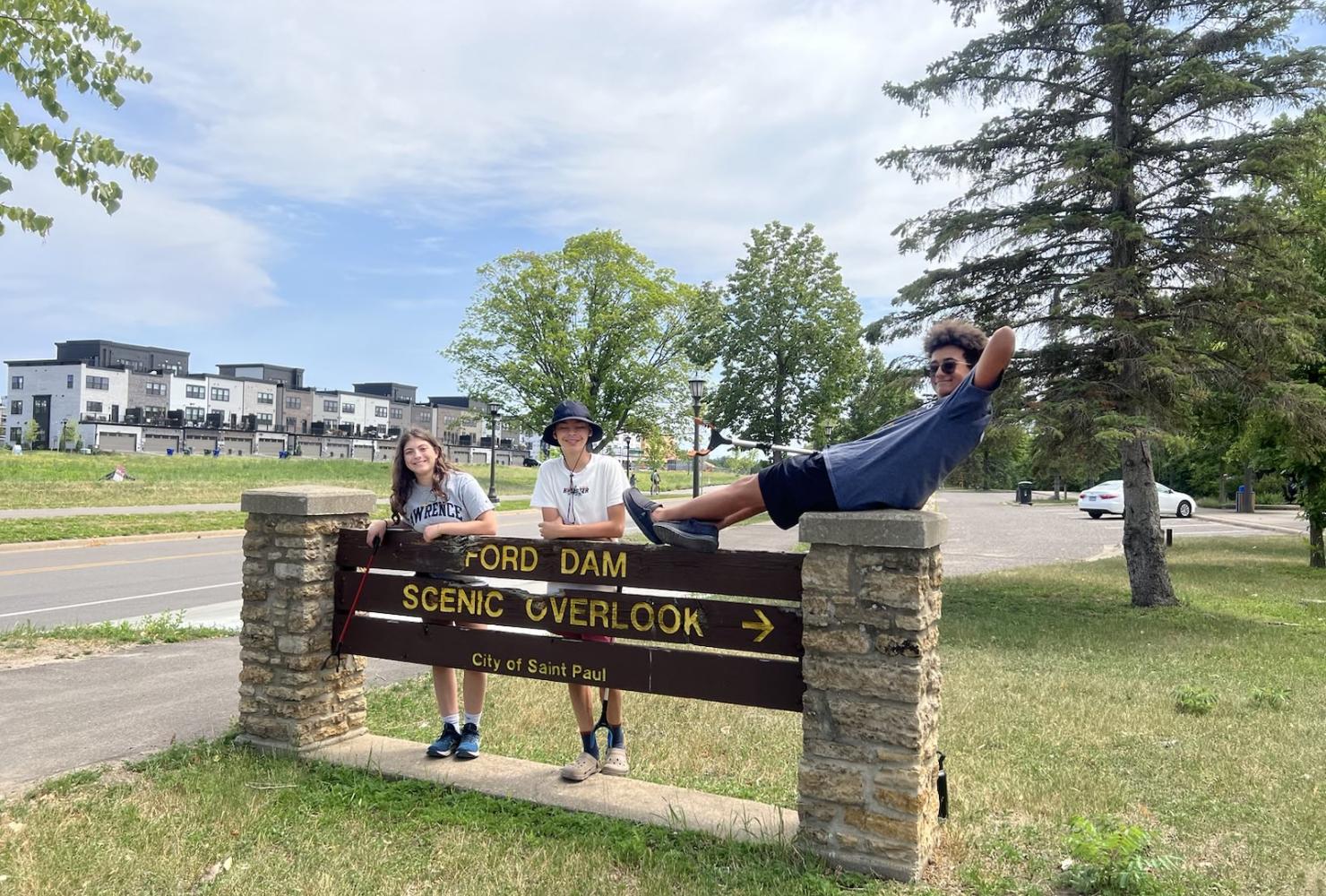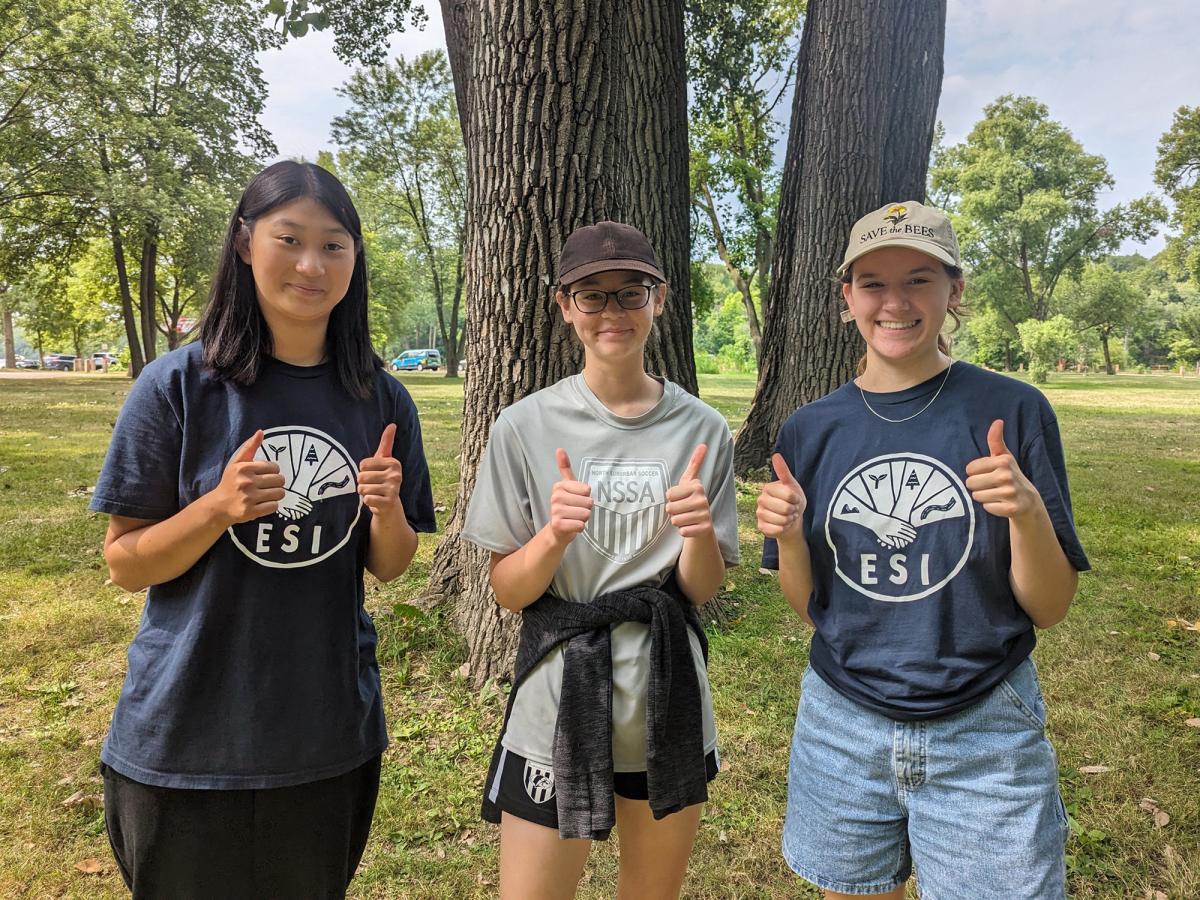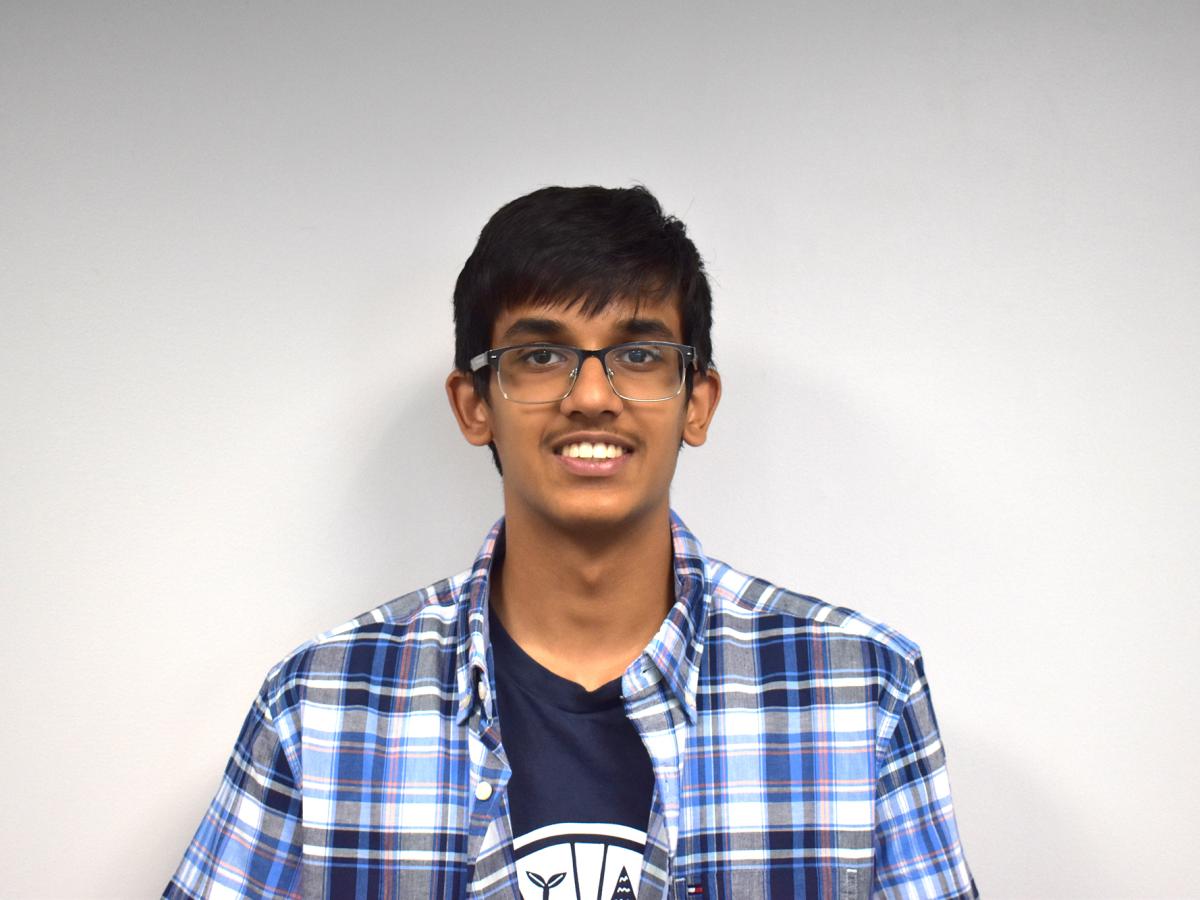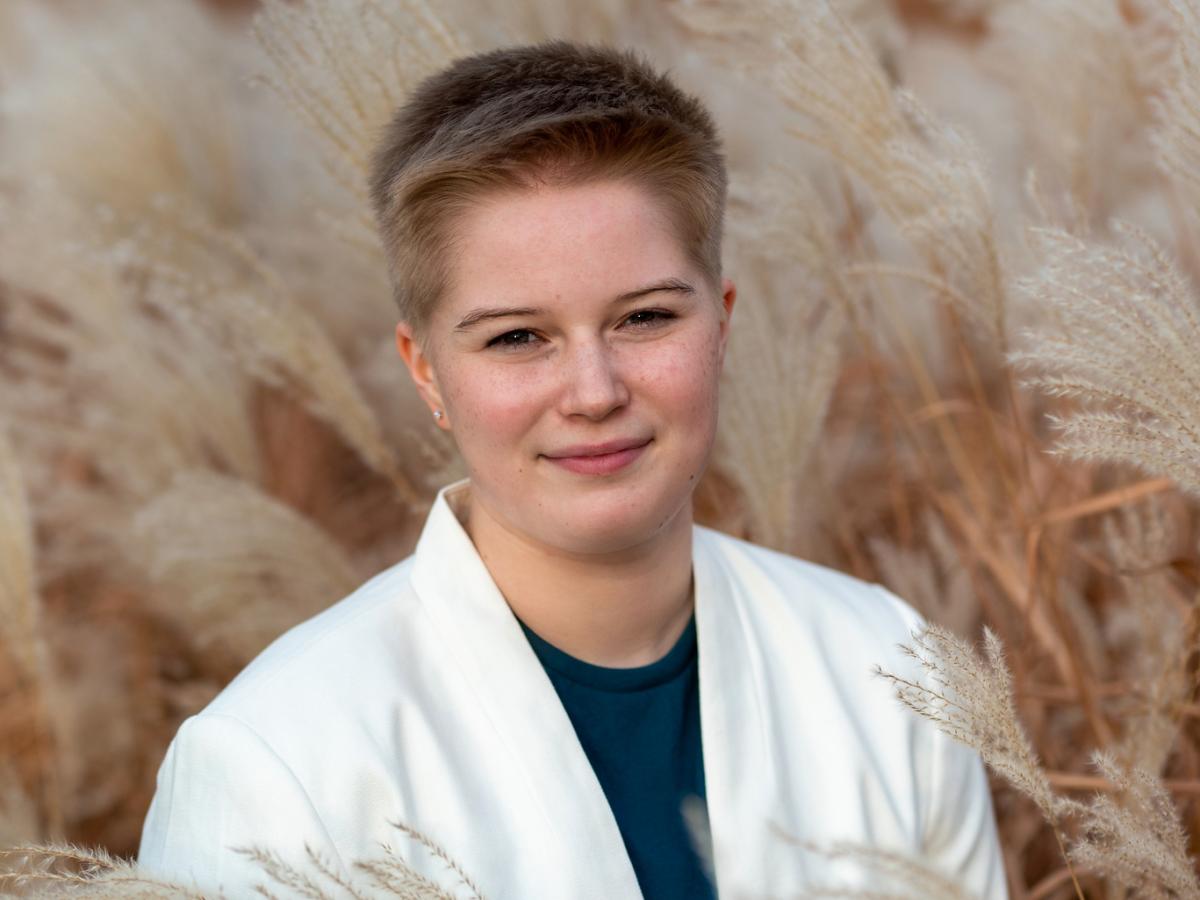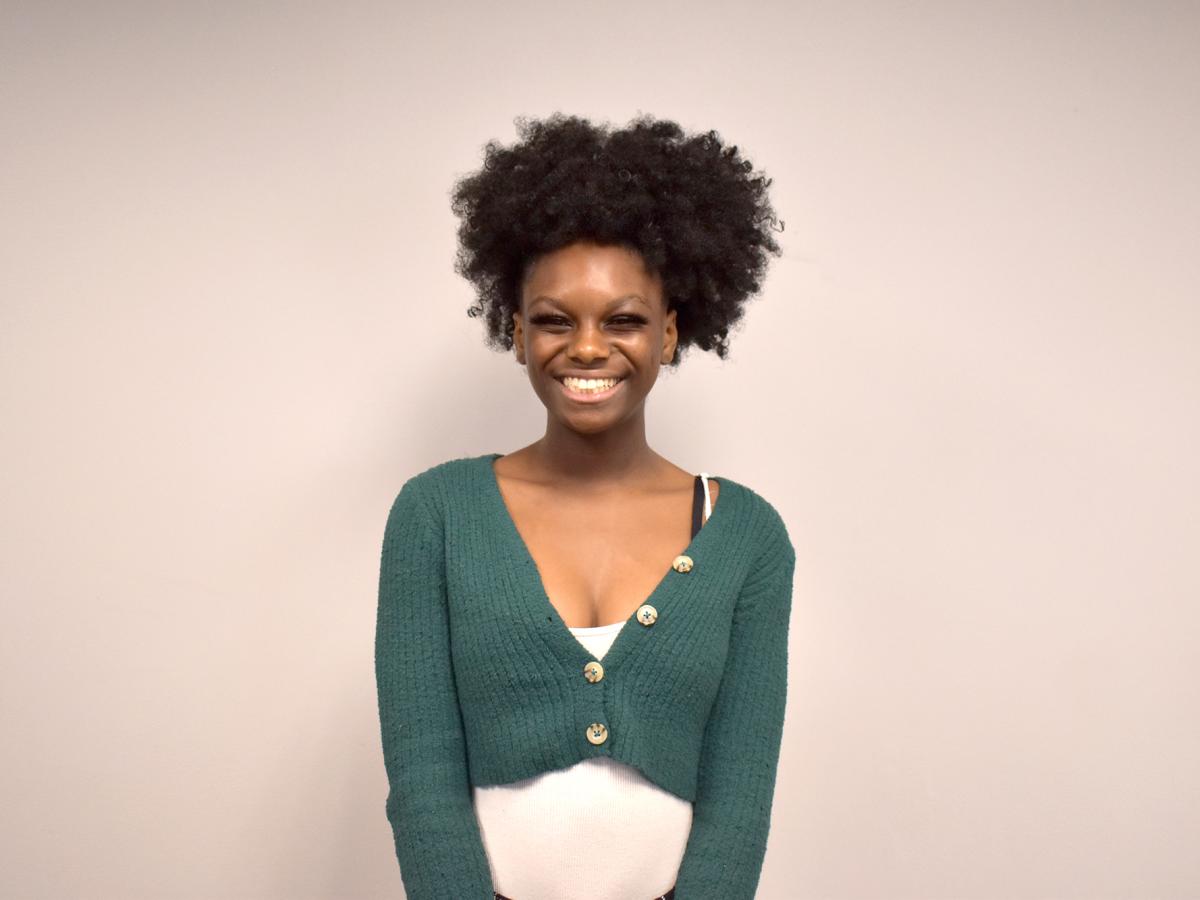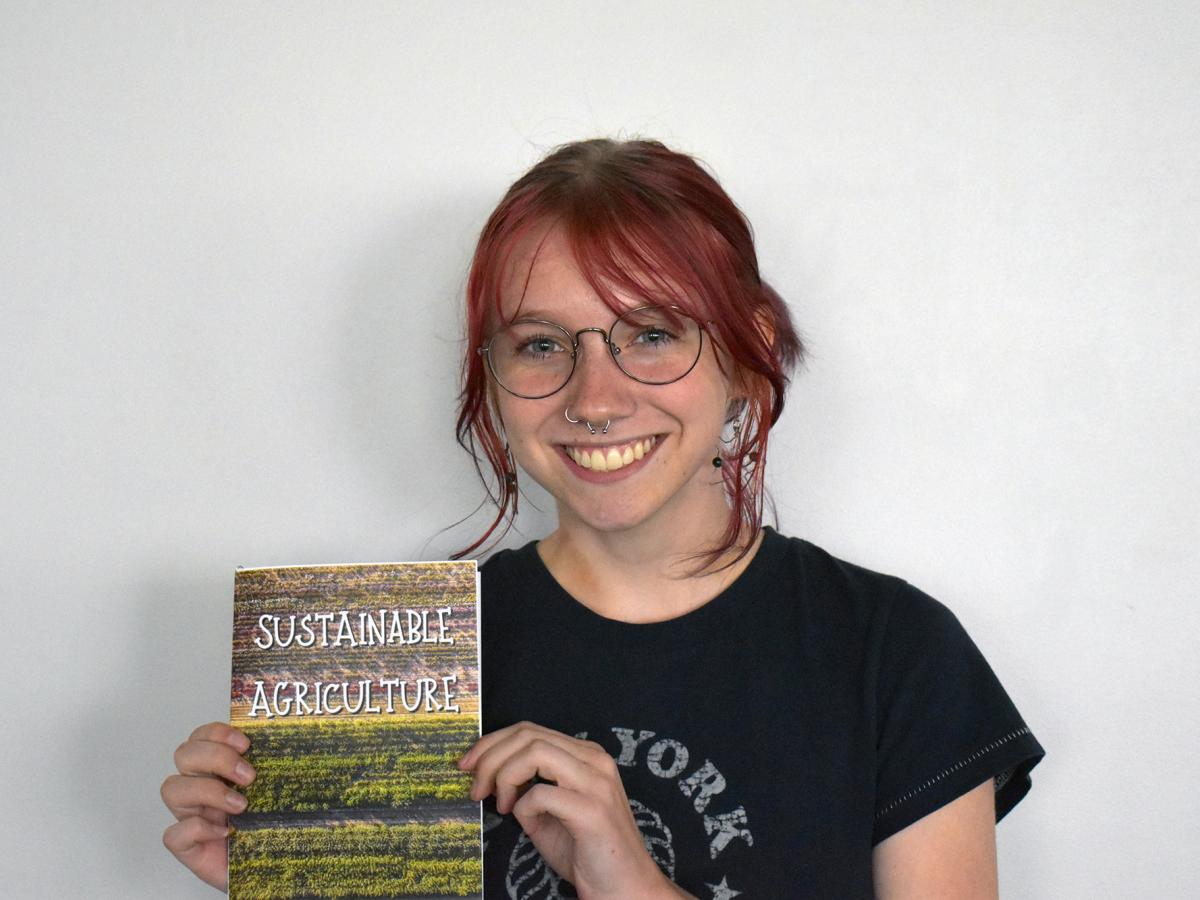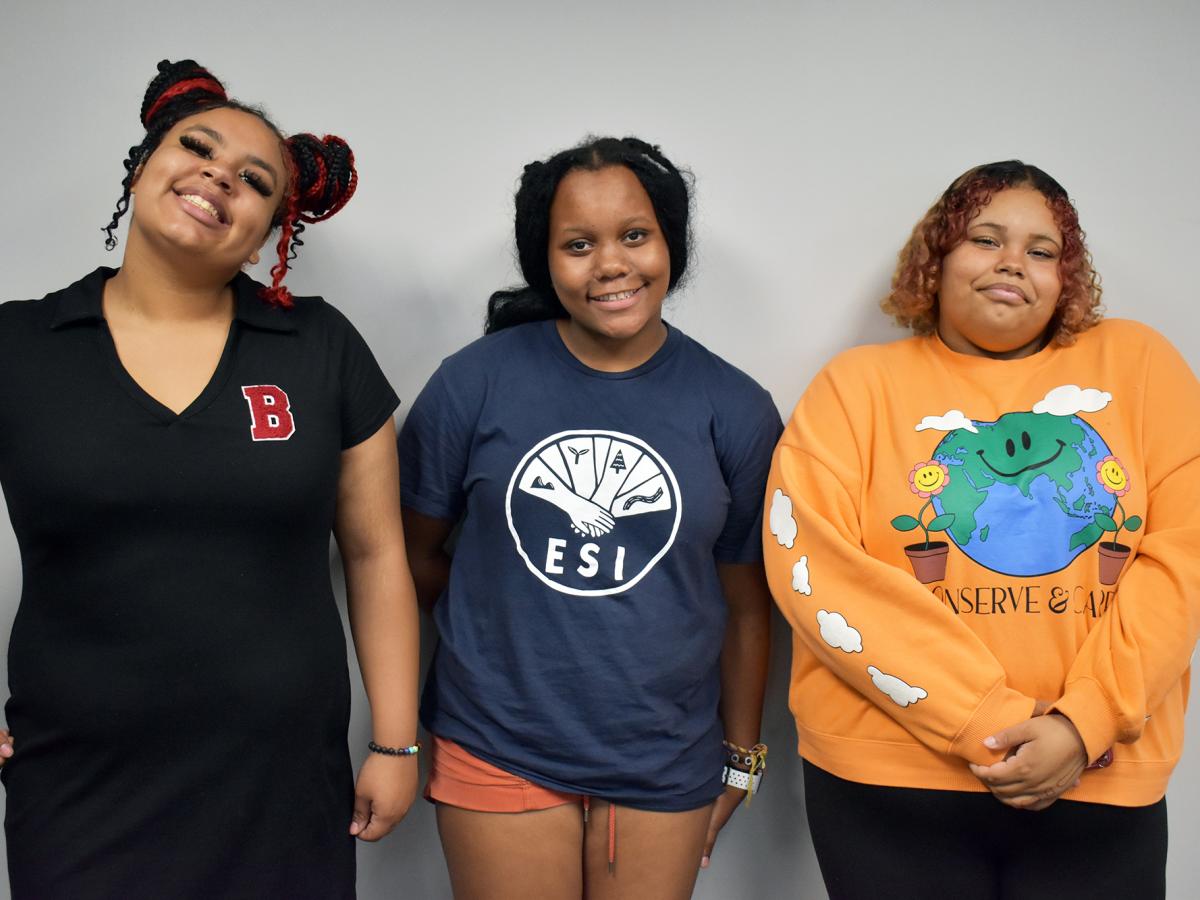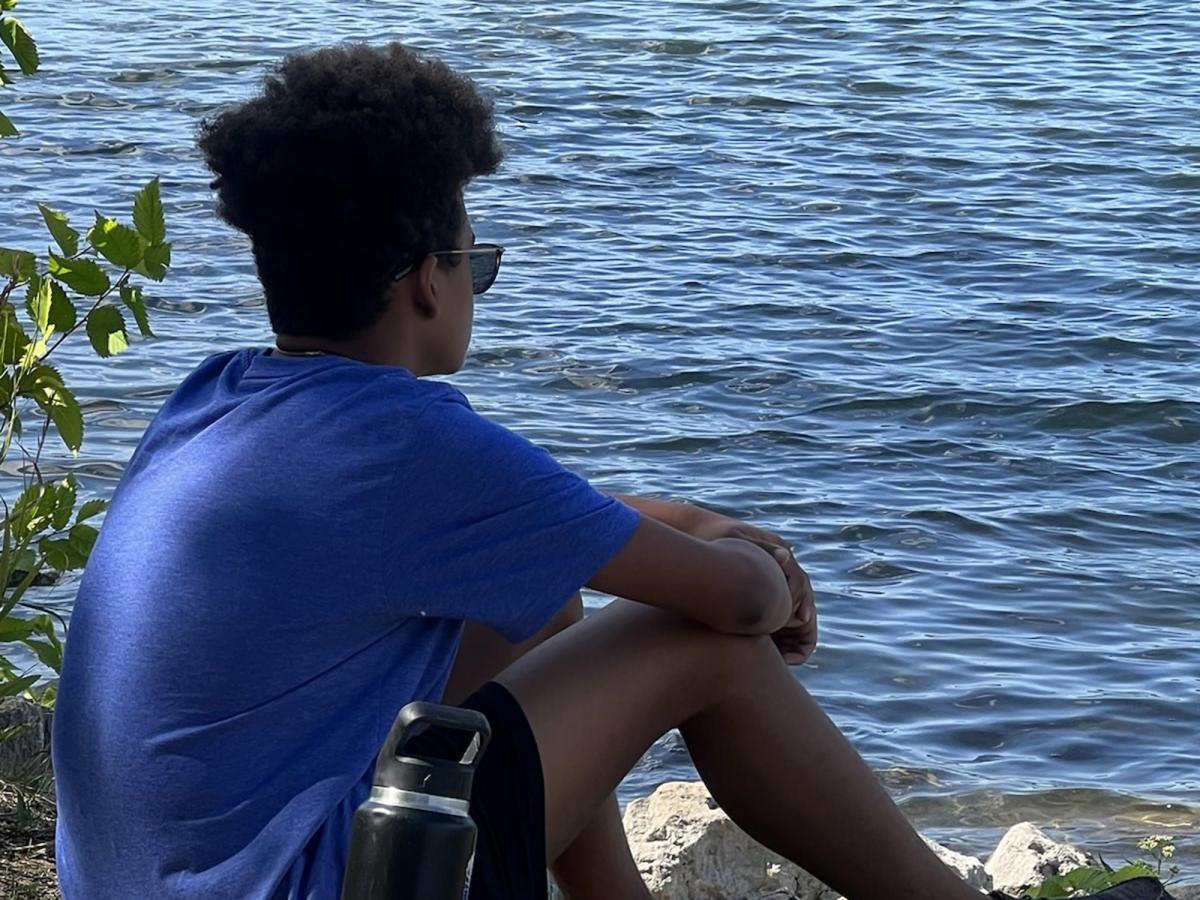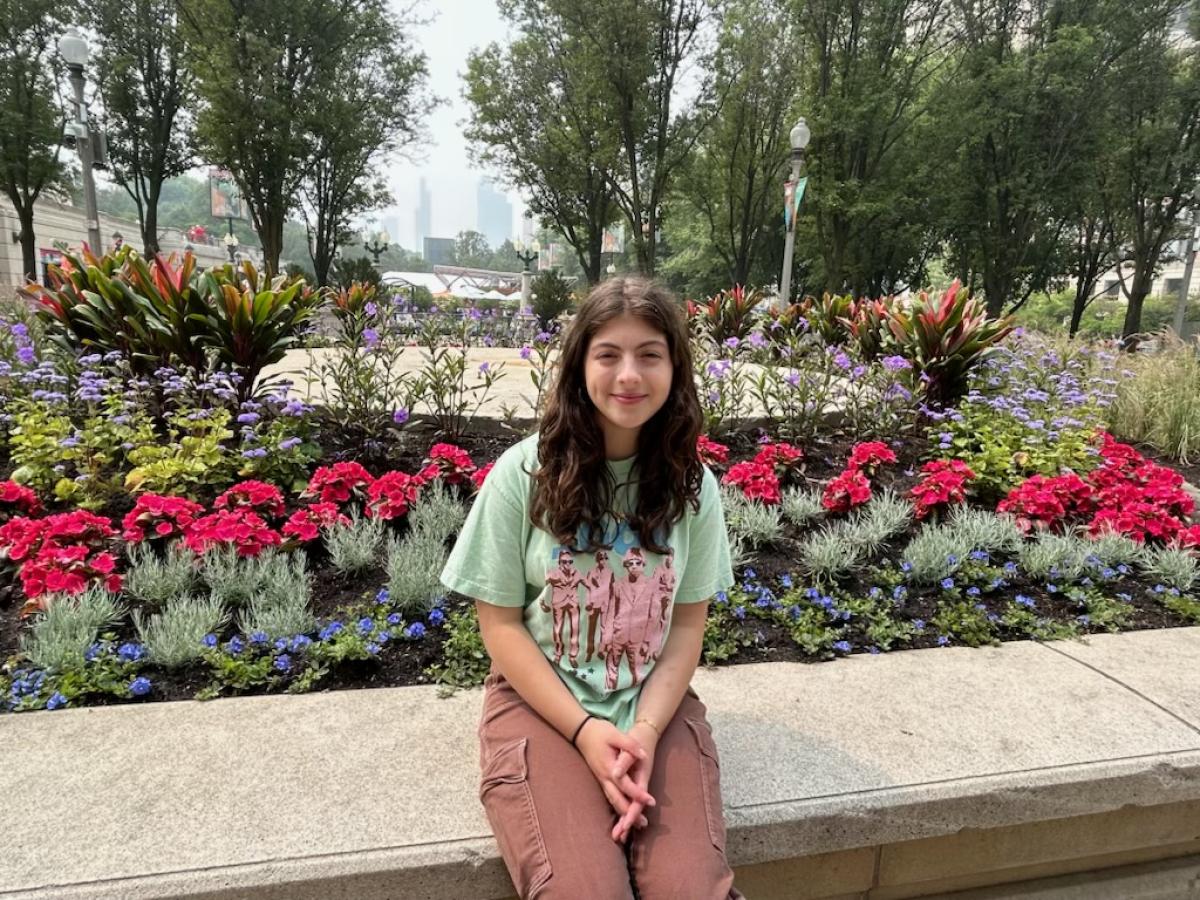Final projects from our 2023 ESI summer intensive fellows
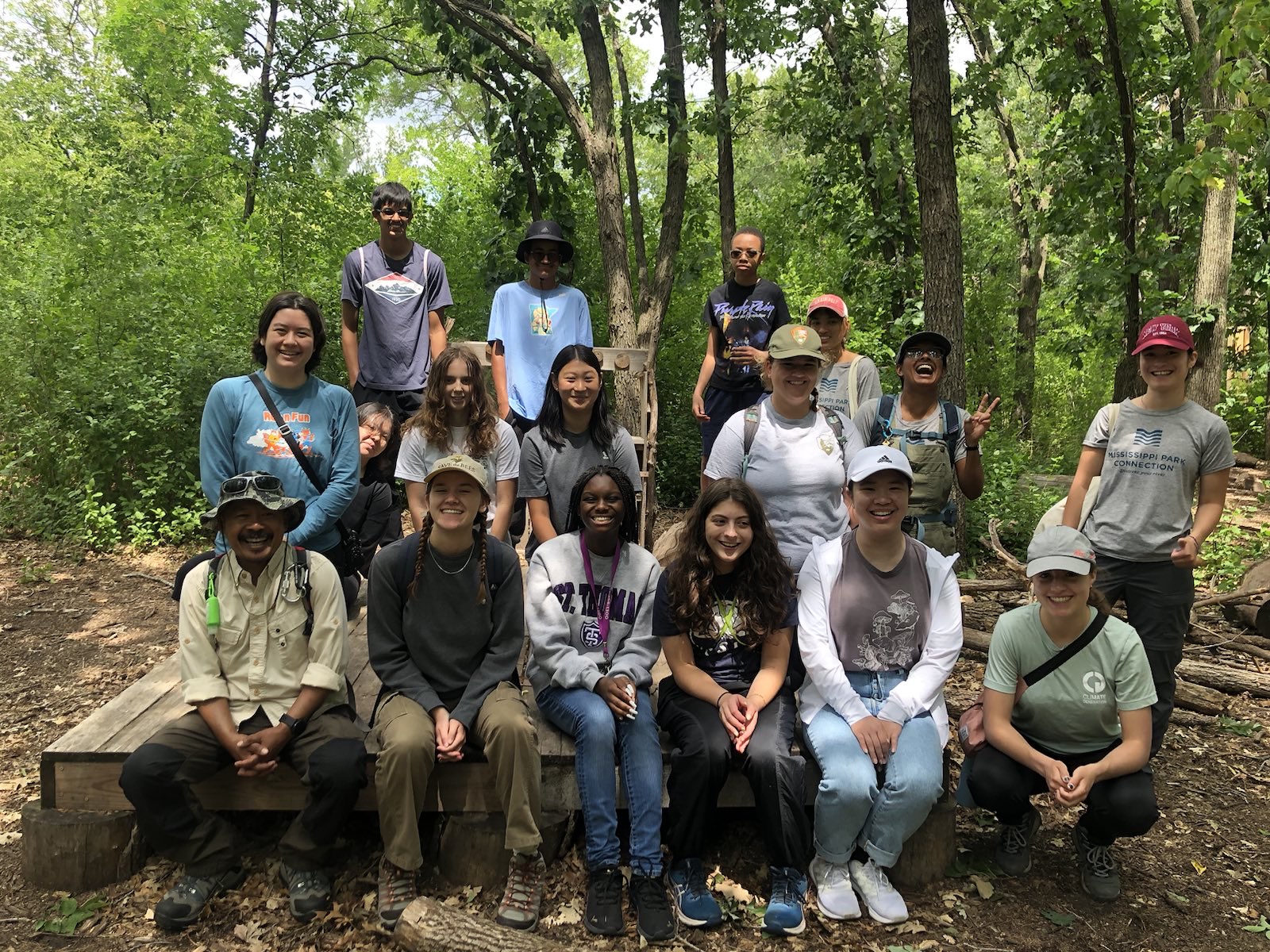
This year, our Environmental Stewardship Institute hosted 18 summer fellows.
The Environmental Stewardship Institute’s summer program introduces high school students to local and global environmental issues, as well as the many career paths in the environmental field through hands-on activities and independent work. Each summer, we choose a theme to highlight in our programming.
Highlights from this year
This year our theme was Mississippi Past and Present: the impact of colonization and industrialization on our waters, so we focused on the history of the Twin Cities and how that led to the river we know today.
During the six-week program, our 18 fellows and four assistants went on a plant walk, picked up trash around Highland, visited Phalen Park and helped design a storm drain water quality mural in St. Paul.
We had to adjust to unpredictable air quality conditions, but this resulted in trips to the Science Museum and to Highland Library, where we heard from an environmental lawyer and Jamal Hashi, the chef who pioneered the camel on a stick at the State Fair.
We discussed issues such as Lock and Dam 1, Ford Area C and redlining in the Twin Cities. We also worked on career skills and did reflections on our favorite natural places and how we can protect them. One of our returning fellows, Amani, reflected on her ESI experience, saying, "ESI has made me care a lot more about our ecosystems. Now I have more of an actual connection after getting out there and being hands-on. I actually understand what’s going on, and I care more on a personal level."
Independent projects
The main highlight of the summer is always the fellows’ projects, and this year was no exception. Fellows complete a summer project that they present on the last day of the program. The projects can be about any environmental topic in any format, from a river cleanup volunteer event to a zine about sustainable agriculture.
The goal of the summer projects is to give participants the freedom to organize their own work process and final product, unlike school projects where students are required to follow guidelines. This freedom allows fellows to research something they are truly interested in and see what they can accomplish in a little over a month.
The wide array of fellows’ interests was reflected in the projects, which included focuses on topical issues such as microplastics and Line 3, as well as projects about sustainable agriculture, Minnesota animals and more! I hope that their hard work and passion are evident as you look through a sampling of their finished projects.
ESI fellows Kaia Frazier, Alecia Jendro and Seri Sanches took action on water pollution by hosting a cleanup and creating educational materials.
What are microplastics and what can we do about them? ESI fellow Ishaan Goyal researched this problem and its solutions.
ESI fellow Emilia turned to two restoration specialists and stewards to learn more about Traditional Ecological Knowledge.
What are the potential impacts of these pipelines? ESI fellow Norijah investigated through interviews and research.
ESI fellow Lucy dug in at two organic farms to research sustainable agriculture and create this info zine.
ESI fellows Alaia, Camille and Amani looked into invasive zebra mussels and control methods.
Amarii wrote a poem including facts about the beloved blue jay.
ESI assistant Riya created an interactive website to showcase youth voices and other perspectives on the past, present and future of environmental injustice in the Twin Cities.
(Note: Opinions expressed in projects are those of the program participant and do not necessarily represent those of FMR.)
Join us
We created the Environmental Stewardship Institute to help close the opportunity gap for BIPOC and underrepresented communities in the environmental field. Youth leadership is a key part of our approach to equity and a long-term approach to diversifying the environmental sector. We hold a summer intensive program and a school-year youth advisory council. Learn more.
FMR's Environmental Stewardship Institute is part of our larger Stewardship and Education program. Check out our other opportunities for youth and for all ages to get involved with FMR.
Thank you to 3M, BAE Systems, Capitol Region Watershed District, Cargill Foundation, HB Fuller, Langwater Foundation, Protolabs, Trillium Family Foundation, Xcel Energy Foundation and donors like you for making our ESI program possible.
